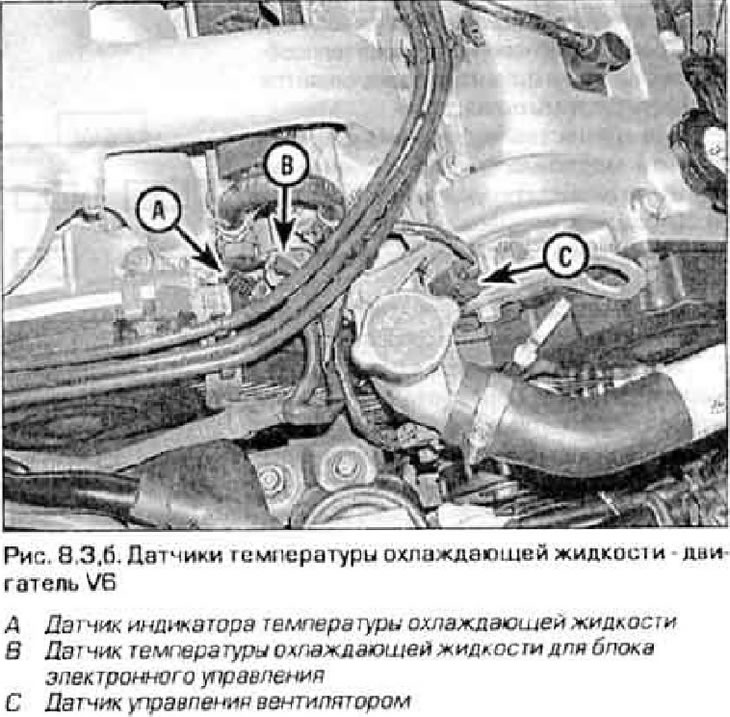Attention! Do not start this work until the engine has completely cooled down.
Examination
1. If the coolant temperature indicator on the instrument panel does not work, first check the fuse (see chapter 12).
2. If the gauge shows a high temperature after running the engine for a short time, refer to Troubleshooting at the beginning of this guide.
3. If the gauge shows a high temperature immediately after starting a cold engine, disconnect the connector from the temperature sensor in the engine compartment (pic. 8.3.a, b). If the indicator reading becomes zero, replace the sensor with a new one. If the indicator reading has not changed, it is likely that the cause of the malfunction is a short circuit in the temperature indicator or a malfunction of the indicator itself.
 |  |
4. If the temperature indicator does not change within 10 minutes after starting the engine and the fuse is good, stop the engine. Disconnect the connector from the temperature sensor and use a jumper to connect the sensor output to the motor housing. Briefly turn on the ignition, did not start the engine. If the indicator shows a high temperature, replace the sensor.
Replacement
5. Drain the cooling system (see chapter 1).
6. Disconnect the connector from the temperature sensor.
7. Turn out the gauge.
8. Screw in the new sensor and tighten it securely. Do not use thread sealant, as this may interfere with the ground connection of the sensor. Connect the connector.
9. Fill with coolant and check for leaks and correct indicator readings.
